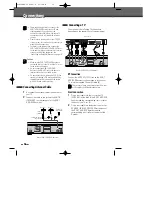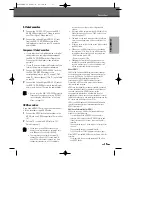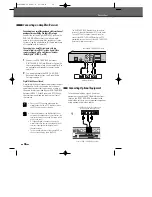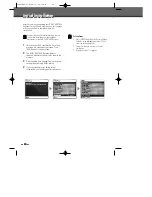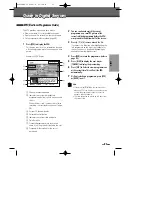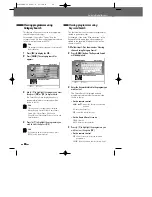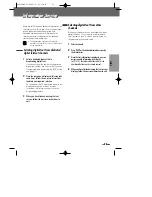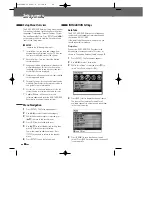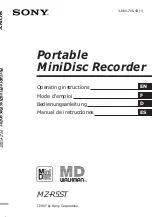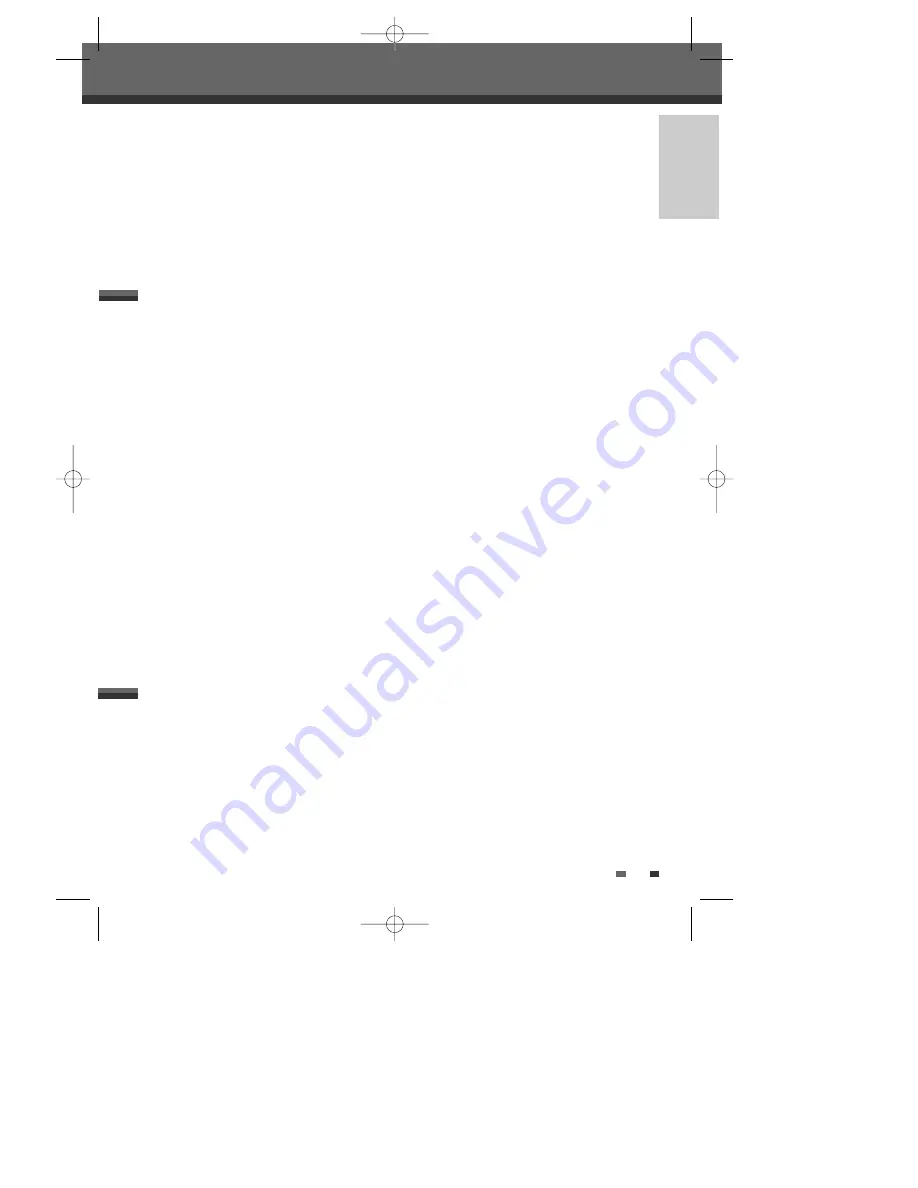
9
INTRODUCTION
9
Overview Features
Notes on Recording
• The recording times shown are not exact
because the DVB-T HDD/DVD Recorder uses
variable bit-rate video compression. This means
that the exact recording time will depend on
the material being recorded.
• When recording a TV broadcast, if the
reception is poor or the picture contains
interference, the recording times may be
shorter.
About DVD Recording
• Discs recorded at high speeds (equal to or
greater than 2X) may not be recognized.
• If you record still pictures or audio only, the
recording time may be longer.
• The displayed times for recording and time
remaining may not always add up to the exact
length of the disc.
• The available recording time may decrease if
you heavily edit a disc.
• When using a DVD+R disc, you can keep
recording until the disc is full, or until you
finalise the disc. Before you start a recording
session, check the amount of recording time
left on the disc.
Recording TV Audio Channels
The DVB-T HDD/DVD Recorder can record channel
audio. For analogue TV broadcasts, this usually
means mono or stereo, but digital TV programs are
broadcasted in multi-lingual audio channel. You can
record multiple channel audio.
Restrictions on Video Recording
• You cannot record copy-protected video using
this DVB-T HDD/DVD Recorder. Copy-protected
video includes DVD-Video discs and some
satellite broadcasts. If copy-protected material
is encountered during a recording, recording
will pause or stop automatically and an error
message will be displayed on-screen.
Copyright Notice
• Audio and video recordings you make using the
DVB-T HDD/DVD Recorder are for your
personal use only. You may not sell, lend, or
rent them to other people.
• This product incorporates copyright protection
technology that is protected by method claims
of certain U.S.patents and other intellectual
property rights owned by Macrovision
Corporation and other rights owners. Use of
this copyright protection technology must be
authorized by Macrovision Corporation, and is
intended for home and other limited viewing
uses only unless otherwise authorized by
Macrovision corporation. Reverse engineering
or disassembly is prohibited.
Using DV, also known as i.LINK, you can connect a
DV-equipped camcorder to the DVB-T HDD/DVD
Recorder using a single DV cable for input and
output of audio, video, data and control signals.
The i.LINK interface is also known as IEEE 1394-
1995.
‘i.LINK’ and the ‘i.LINK’ logo are trademarks.
• The DVB-T HDD/DVD Recorder is only
compatible with DV-format (DVC-SD)
camcorders. Digital satellite tuners and Digital
VHS video recorders are not compatible.
• You cannot connect more than one DV
camcorder at a time to the DVB-T HDD/DVD
Recorder.
• It may not always be possible to control the
connected camcorder via the DV IN jack.
• Audio input to the DV IN jack should be 32 or
48kHz (not 44.1kHz).
• Picture disturbance on the recording may occur
if the source component pauses playback or
plays an unrecorded section of tape, or if the
power fails in the source component, or if the
DV cable becomes disconnected.
What is DV?
• existing DVD video discs can be played on the
recorder.
• recordings made on your DVB-T HDD/DVD
Recorder can be played on other DVD video
players and DVD-ROM drives.
0202DRHT-630
2007.2.2
9:19
AM
˘
`
9

















